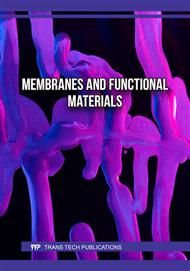p.3
p.15
p.27
p.39
p.47
p.57
p.67
Compare the Properties of Composite Material by Date Leaves with Different Additives
Abstract:
Almost no product is made today without the use of composite materials, which have demonstrated their value over time in a variety of applications. Examples include household products, automobiles, oil and gas stations and spacecraft. Instead of using timber, leaves will be used to create a solid material. The goal of this study is to identify the distinguishing features of composite materials made from dates palm waste, as well as the overall effects on the properties when changing the mixture's proportions and the amount to which those materials are vulnerable to outside influences. It also aims to identify the best material that can be produced and used in home furnishings, manufacturing, architectural design, practical applications, and other science-related fields. This project will address the use of natural fibers from dates palm waste and some other materials to convert them into a strong, lightweight, low-cost composite material to replace wood, aluminum, synthetic fibers, and other materials in industries and uses. It will also explore the manufacturing processes, testing methods, and the outcomes of comparing it with other materials. The UHU (adhesive) matrix has the lowest hardness value compared to others. Structure tests show composites' internal composition; it plays an important role in understanding the properties of composites. The water absorption test demonstrates the duration required for composites to become saturated with water, with optimal results falling within the range of 13 to 24 hours for saturation.
Info:
Periodical:
Pages:
57-66
Citation:
Online since:
November 2024
Keywords:
Price:
Сopyright:
© 2024 Trans Tech Publications Ltd. All Rights Reserved
Share:
Citation:



